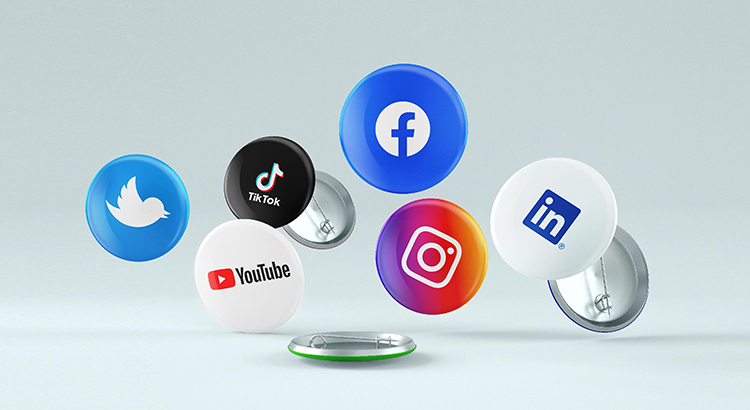Social media analytics provide insights that enable businesses to assess their performance on social platforms and make data-driven decisions. This comprehensive guide explores the definition, importance, types, and tools of social media analytics.
Quick Glance:
- What Are Social Media Analytics?
- Importance of Social Media Analytics
- Types of Social Media Analytics
- Social Media Analytics Tools
- Conclusion of Social Media Analytics
What Are Social Media Analytics?
Social media analytics encompass the collection and analysis of data and metrics from various social media platforms. These insights provide valuable information about a brand’s performance, audience engagement, and overall impact on social channels
Importance of Social Media Analytics
The benefits of social media analytics include:
1. Trendspotting
Social media analytics aid in trendspotting by identifying emerging platforms, topics, ads, influencers, and content preferences, guiding strategic decisions for future engagement strategies.
2. Brand sentiment
Brand sentiment analysis gauges online perceptions, ensuring customer satisfaction and uncovering improvement opportunities through sentiment monitoring and competitor analysis.
3. Value perception
Value perception assessment via social media analytics informs brand positioning and pricing strategies, leveraging insights to enhance product appeal and address consumer needs effectively.
4. Setting social media goals
Utilizing social media analytics enables the setting of realistic goals based on performance metrics, facilitating strategic adjustments to achieve measurable outcomes aligned with business objectives.
5. Proving ROI
Social media analytics play a pivotal role in proving the ROI of marketing efforts by tracking campaign performance, website traffic, and sales, utilizing tools like UTM tracking and URL shortening to attribute conversions accurately.
Types of Social Media Analytics
1. Performance Analysis
First and foremost, you need to measure the overall performance of your social media efforts. This includes social media metrics including:
- Impressions
- Reach
- Likes
- Comments
- Shares
- Views
- Clicks
- Sales
2. Audience Analytics
Next, you’ll want to take a look at your audience analytics. This will help you discover which demographics your content is reaching—and ensure they match up to your target audience.
If not, you may need to adjust your content strategy to better attract your ideal customer profile. Audience analytics will include data like:
- Age
- Gender
- Location
- Device
3. Competitor Analysis
Another key area to look into is how your competitors perform on social media. How many followers do they have? What is their engagement rate? How many people seem to engage with each of their posts?
You can then compare this data to your own to see how you stack up—as well as set more realistic growth goals. Using a tool like Sprout, you can gather all of this data in one place and measure it network by network.
4. Paid Social Analytics
When you’re putting money behind specific social media posts, you want to make sure they’re driving results. This is why you absolutely need to pay close attention to your paid social analytics. Some of the most important ad analytics to measure include:
- Total number of active ads
- Clicks
- Click-through rate
- Cost-per-click
- Cost-per-engagement
- Cost-per-action
- Conversion rate
- Total ad spend
5. Influencer Analysis
If you’re running influencer marketing campaigns, tracking the success of these partnerships is essential to proving ROI.
It’s recommended to use the five W’s + H of influencer marketing to inform your strategy and measure ROI at each stage of the buyer journey. Some of the data that should be kept track of includes:
- Number of posts created per influencer
- Total number of interactions per post
- Audience size of each influencer
- Hashtag usage and engagement
6. Sentiment Analysis
The last major segment of social media analysis that should be tracked is brand sentiment. Earlier, it was discussed how social media analytics tools can help determine and measure sentiment analysis.
But if a deeper understanding is desired, social listening can be used to gauge specific connotations around the brand.
Social Media Analytics Tools
There are some free and paid software for social media analytics, such as:
Buffer
Buffer simplifies social media analytics by providing insights into post performance, engagement metrics, and audience demographics.
Sprout Social
Offers comprehensive social media management and monitoring tools, including cross-channel analytics, audience insights, and competitor benchmarking.
Hootsuite
Combines social media management, listening, publishing, and analytics capabilities, enabling businesses to analyze performance across multiple social platforms.
Zoho Social
Provides advanced analytics and reporting features, allowing businesses to track engagement, measure reach, and monitor brand mentions across social channels.
Sendible
Offers monitoring, listening, and reporting tools to track social media engagement, audience sentiment, and brand mentions effectively.
Conclusion of Social Media Analytics
Social media analytics are essential for businesses seeking to optimize their social media strategies and drive tangible results. With plenty of tools and platforms available, businesses have the resources they need to harness the power of social media analytics and achieve their marketing objectives effectively.


